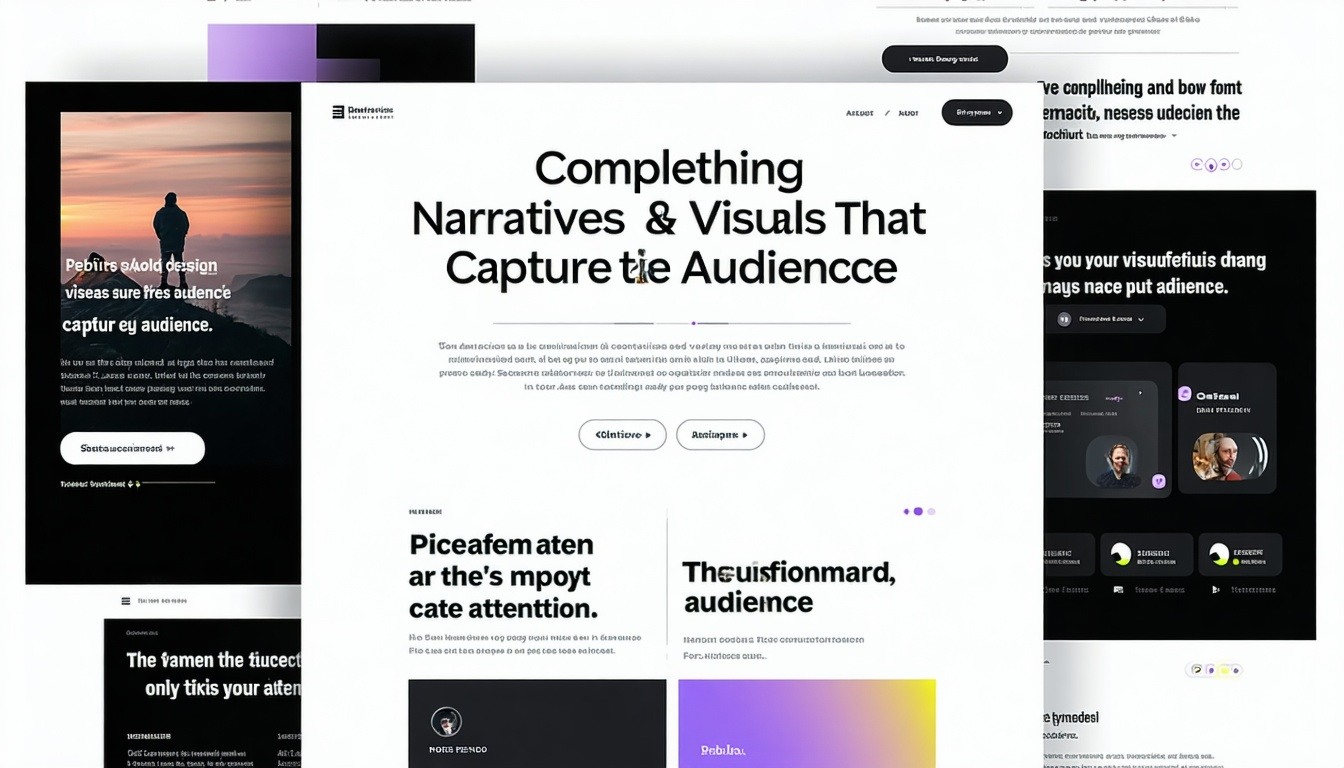
Discover how storytelling can transform web design to forge deeper connections with your audience and elevate your marketing strategy.
Why Storytelling Matters in Web Design
Storytelling taps into a fundamental aspect of human psychology. Humans have always connected more deeply with stories than with mere data.
A well-crafted story resonates emotionally, creating a memorable experience that can build lasting connections. Great brands leverage storytelling to build trust and foster engagement. By weaving a narrative, they can create a sense of familiarity and loyalty among their audience. This is the difference between a website that simply informs and one that emotionally connects.
A website imbued with storytelling elements can transform passive visitors into active participants in your brand's journey.
Key Elements of Storytelling in Web Design
Crafting a compelling brand narrative is essential. This involves creating a story that aligns with your brand’s mission and values, ensuring consistency in message and tone.
Visual storytelling plays a significant role; images, videos, and animations can evoke emotions more powerfully than text alone.
Structuring your website like a compelling story—complete with a hook, build-up, and resolution—keeps users engaged.
Consistent tone and voice are crucial, as the words you choose shape perception and build familiarity, reinforcing your brand's identity at every touchpoint.
Integrating Story Elements into Web Design
Integrating storytelling elements into web design involves a cohesive blend of visual and textual content.
Start with a captivating homepage that sets the stage for your brand’s story. Use imagery and multimedia to create an immersive experience. Ensure that the narrative flows seamlessly from one section to the next, guiding visitors through a structured journey. Consistent messaging across all pages helps reinforce the core story and keeps visitors engaged throughout their visit.
Don't forget to incorporate interactive elements that invite users to participate in the story. These can be in the form of polls, quizzes, or social media integrations that encourage sharing and engagement.
Best Practices for Using Storytelling in Custom Website Design
When using storytelling in custom website design, start by understanding your audience. Tailor your narrative to their needs and preferences. Use authentic stories that reflect real experiences and values. This builds credibility and trust. Ensure that your design elements—color schemes, typography, and layout—complement the story you’re telling. This creates a cohesive experience that resonates with users.
Additionally, leverage data to refine and enhance your storytelling approach. Analyze user behavior to understand which story elements resonate most and adjust your strategy accordingly.
Storytelling and SEO: A Hidden Advantage
Engaging, story-driven content keeps visitors on your site longer, which is beneficial for SEO. Longer time-on-page metrics signal to search engines that your content is valuable and relevant. Storytelling can reduce bounce rates by providing a more engaging experience that encourages visitors to explore further. Google favors content that resonates with real users, not just search algorithms. By focusing on storytelling, you create content that is more likely to be shared and linked to, further enhancing your SEO efforts.
Actionable Tips to Implement Storytelling in Your Website
Start with a clear understanding of your brand’s core story. Identify key moments and messages that define your brand. Use compelling headlines and subheadings to guide users through your narrative. Incorporate multimedia elements to create a rich, engaging experience. Make sure your website’s structure supports a logical flow of information, mimicking the arc of a good story.
Regularly update your content to keep the story fresh and relevant. Engage with your audience through interactive elements and social media, inviting them to become part of your brand’s story.
